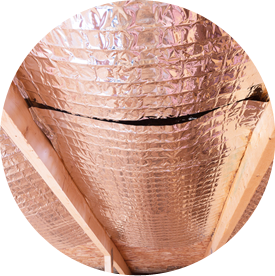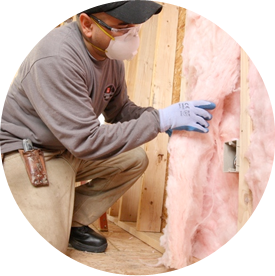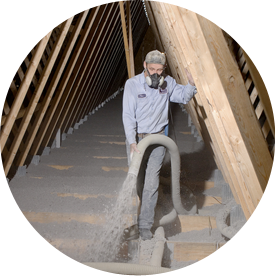Whether you’re a homeowner who needs to re-insulate or a builder looking for more information on types of insulation, basic information can be helpful. So what exactly is insulation and how does it work? What are the different insulation materials?
What Insulation Is & How It Works
Insulation is a material that stops the transfer of heat to help keep your home more comfortable all year round—warmer in the winter and cooler in the summer. It can be installed in various areas of your home, including the attic, wall and crawl space.
Different types of insulation work a bit differently, but in general, how well a type of insulation stops heat transfer is measured as an R-value. A particular type of insulation’s R-value refers to its resistance to heat flow, and the higher the R-value, the more effective the type of insulation is at stopping heat transfer. The type you install depends on a number of different things, including:
- Where you live
- How old your home is
- The type of HVAC equipment you have
- And more
Insulation Materials
Common types of insulation include:
- Fiberglass: Fiberglass, which has been used to insulate homes for decades, is available as loose-fill or batts. Fiberglass is made of tiny glass fibers and is often installed in attics but can be used to insulate walls and crawl spaces as well. It is often pink in color.
- Radiant barrier: A type of reflective foil insulation, radiant barrier is installed in attics to help homes and buildings reflect (rather than absorb) heat from the sun.
- Spray foam: Typically made of polyurethane, spray foam is applied wet and expands into thick foam. Spray foam insulation can be installed in crevices and hard-to-reach areas and can help reduce air infiltration. We install spray foam in new construction projects.
- Cellulose: Cellulose insulation is environmentally friendly—it consists of up to 85 percent recycled material and takes less energy to make than other insulation materials—and can be installed in any area of a home. We install cellulose in new construction projects.
Now that you know about the different types of insulation, you can decide which combination is best for your situation—and our professionals can help. Contact the IBP Houston team today!








